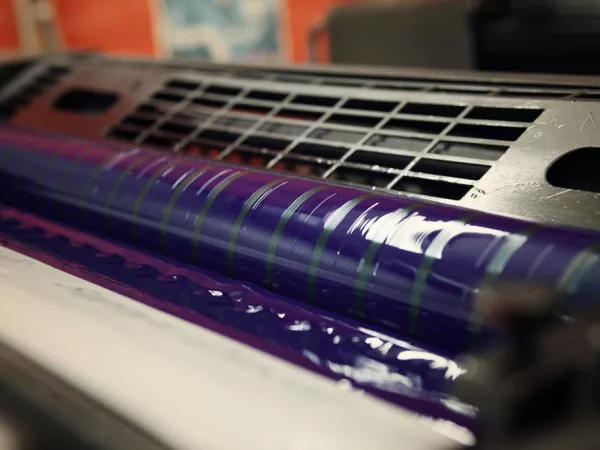Digital vs Offset Printing - What's the diff?

While we don't bother you with such details - after all, you just want your project printed in the best way possible! There are still many in the industry who talk of digital vs offset printing.
So what is the difference? And why we take care of that question for you...
Offset and digital are both useful printing methods. Each have particular benefits depending on your project's requirements.
When you need larger runs of a project, into the hundreds or thousands, or are using a specific, brand-centric Pantone color, then we will quote and recommend offset printing. You can also use a much wider variety of custom papers and specialty inks, such as metallic or fluorescent inks in the offset process.
If a small run of less than 500 or the need for individual addresses or information is required, then we will quote and recommend a digital solution.
What is Offset Printing?
Offset printing technology uses plates, usually made from aluminum, which are used to transfer an image onto a rubber "blanket", and then rolling that image onto a sheet of paper, literally pressing the ink into the paper giving a crisp, professional look.
It's called offset because the ink is not transferred directly onto the paper. We choose and recommend offset printing for larger quantities (eg. over 500) and for colour reproduction accuracy - we can literally colour match to your specific Pantone colour requirement.
What is Digital Printing?
Digital printing, on the other hand, doesn't use plates the way offset does but instead uses a toner (like in laser printers) or liquid ink in larger printers which apply a light coverage of ink to the surface of the paper with a laser jet rather than an ink roller. Digital printing is by far the best choice for smaller quantities (ie. less than 500).
Another benefit of digital printing is it's variable data capability. When each piece needs a unique code, name or address, digital is the only way to go.
What are the Advantages of Digital Printing:
- Setup costs are lower for short runs
- Print only the amount you need, when you need it
- Lower minimum quantities (as low as 1, 20 or 50 pieces)
- Inexpensive black and white digital printing
- Variable data capability (names, addresses, codes or numbering can be done easily)
- Improved technology has made digital quality acceptable for more uses
What are the Advantages of Offset Printing:
- Large quantities can be printed cost effectively
- The more you print, the cheaper the price per piece
- A large variety of paper types with custom finishes can be used
- Special custom inks such as metallic and Pantone colors are available
- Highest possible printing quality, with greater detail and color fidelity

